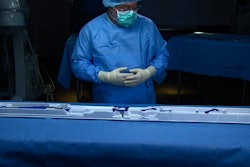Perhaps it is time that manufacturers take a more active and responsible role in addressing the nation's critical infrastructure weaknesses. Recently it was revealed that the intrusion last year into White House computers was accomplished by the Russians exploiting a vulnerability in computer systems at the State Department. According to news reports, an unnamed official has stated that the Russians have "owned" these computers for months and it is not clear that the hackers have yet been eradicated from them. One must ask if the Russians were not just sending us a calling card by allowing their presence to be detected. In February, Director of National Intelligence James Clapper testified in a Senate hearing that the "Russian cyberthreat is more severe than we have previously assessed." If the state department isn't keeping its computers secure, what hope do the rest of us have?
On April 1st, the President issued an executive order declaring a cyber security national emergency; "I, BARACK OBAMA, President of the United States of America, find that the increasing prevalence and severity of malicious cyber-enabled activities originating from, or directed by persons located, in whole or in substantial part, outside the United States constitute an unusual and extraordinary threat to the national security, foreign policy, and economy of the United States. I hereby declare a national emergency to deal with this threat." The substance of this little-reported order is being debated as counter-productive to legitimate security research, such as that performed by so-called "white-hat hackers" who identify vulnerabilities for the purpose of closing them down rather than exploiting them. Debate or not, the government seems to be truly concerned about cyber security.
Also recently, the nation's capital was struck with a power outage that affected many government facilities, including the White House. Reports point to a broken insulator being involved, but there’s no word on what caused the breakage. While breaking into our computer infrastructure takes some significant knowledge, breaking a substation insulator probably requires only a 22 rifle. And while no one has identified terrorism or vandalism as the cause, one need only take a look at an online mapping system to see how easy it is for anyone to track the power grid from source to destination and identify vulnerable and unprotected locations such as the involved switchyard on Ryceville Road near the small town of Mechanicsville, MD. Many will be awaiting a final determination of the first-cause of this event. And while this is a vibrant reminder of the potential for catastrophic disruptions to our society, the good news is that the power grid protected itself from further damage, full service was quickly restored, and emergency systems kicked in to minimize the disruption.
As our world becomes more complex and more interconnected via transportation systems, power grids, pipelines, water and wastewater systems, and computer networks, the potential for significant disruptions increases dramatically. As our manufacturing supply chains stretch to greater distances, the number of potential failure points also increases. In the not-too-distant past, we were significantly more insulated by virtue of our lack of interconnectedness. We are now in an exponential growth mode, becoming more and more interconnected, especially as we embark upon concepts such as the industrial internet of things (IIoT). We seem to have the great minds to invent this technology. We also need to be sure that our education of the masses, our culture, our politics and our institutions keep pace with these changes. We must keep our critical infrastructure robust and resilient. As manufacturers, we must insure the safety and integrity of our plants, including their cyber infrastructure. And we should lend our skills, knowledge and leadership to the bigger problems our society must solve to safely deal with this rapidly changing technology landscape. What are you contributing toward the solution?

























